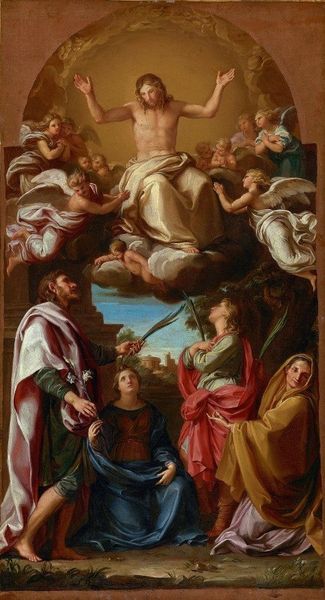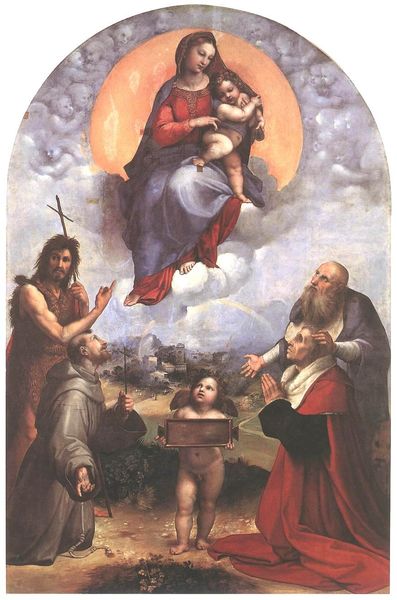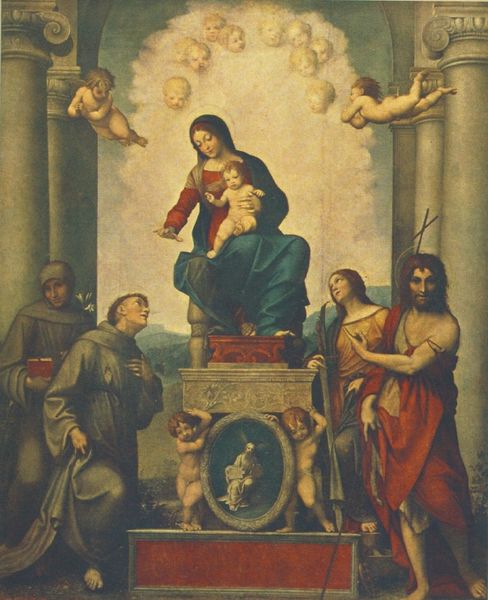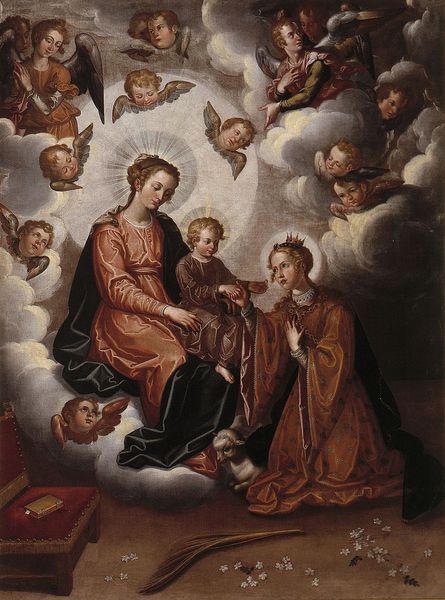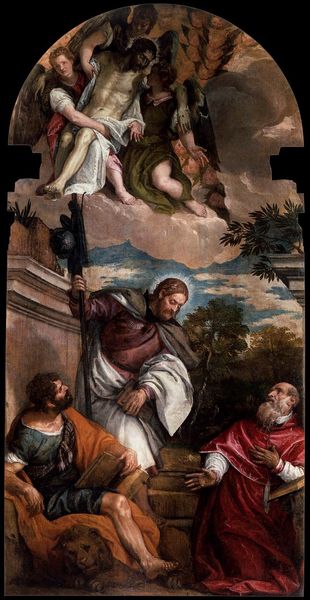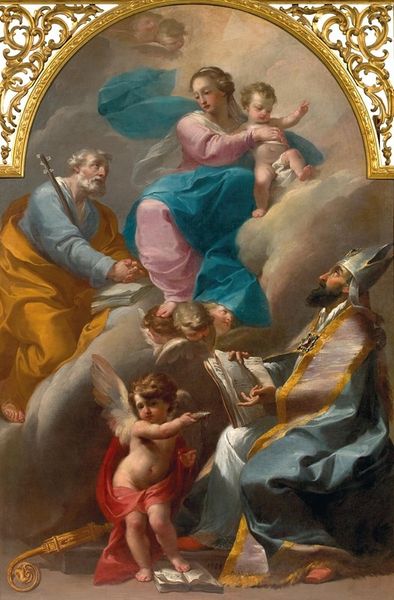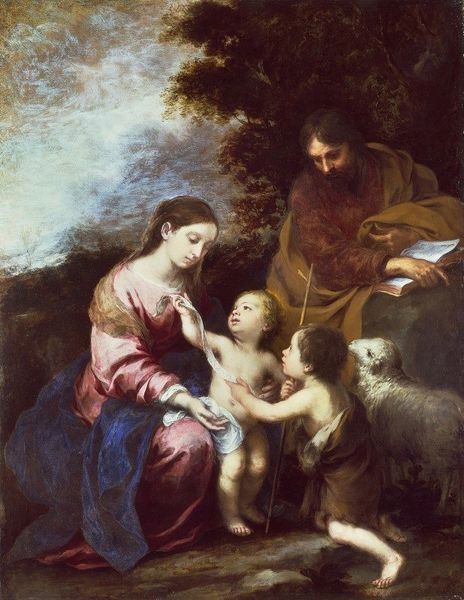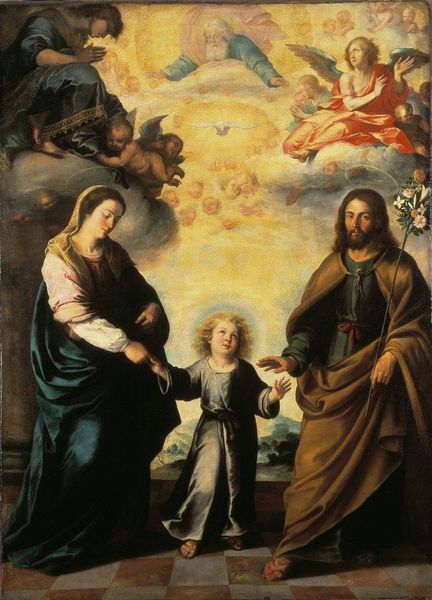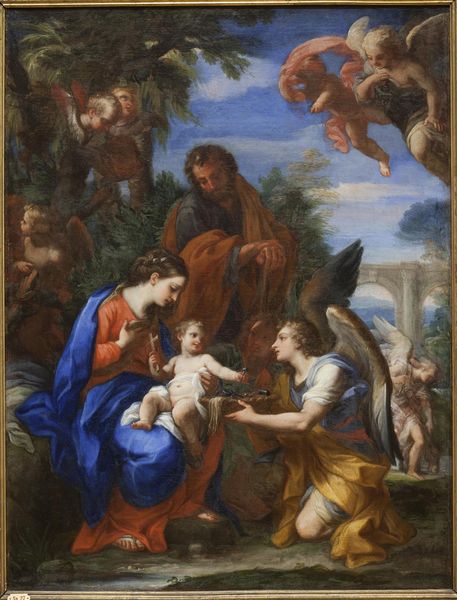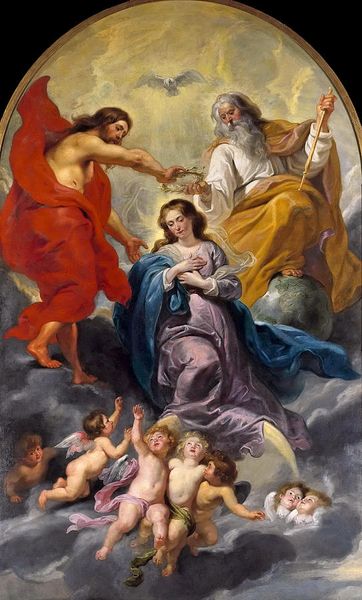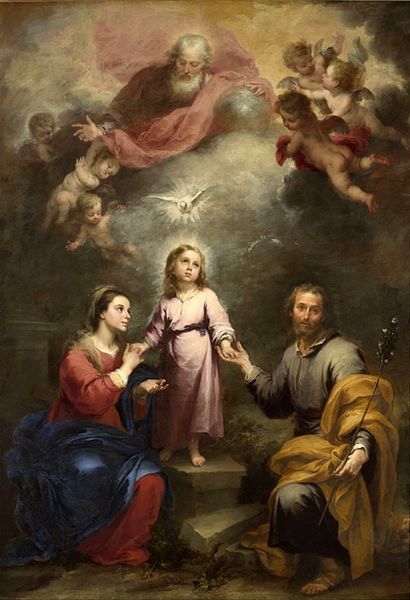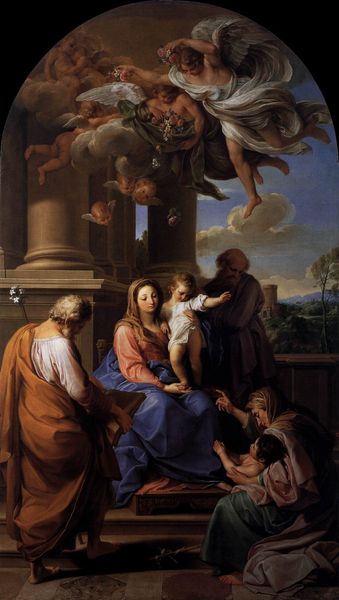
painting, oil-paint
#
portrait
#
high-renaissance
#
painting
#
oil-paint
#
figuration
#
oil painting
#
jesus-christ
#
christianity
#
mythology
#
painting painterly
#
italian-renaissance
#
virgin-mary
Dimensions: 216 x 137 cm
Copyright: Public domain
Curator: We’re looking at Correggio’s “Madonna della Scodella,” created around 1530 using oil paint. It exemplifies the High Renaissance style. What are your initial thoughts? Editor: The dynamic composition immediately strikes me. There's this spiraling upward movement, and the interplay of light and shadow is so soft. It creates an incredibly serene, almost dreamlike atmosphere. Curator: The artwork is rooted in themes of family, faith, and vulnerability within the larger narrative of religious persecution and forced migration, specifically, The Flight to Egypt. Looking at the composition, consider the social contexts, familial burdens, and possible emotional weight for Mary and Joseph fleeing their home country with their infant son. Editor: I notice that emphasis on circular composition and delicate use of light contributes greatly to the painting’s ethereal quality. Semiotically, it's like he's constructing a sacred space, setting these individuals apart in this turbulent time. It feels very calculated, in the best way. Curator: Absolutely. Think about the politics of the era and its historical repercussions in contemporary discussions on migration and asylum seeking. The "Madonna della Scodella" serves as a visual representation of refugees and their struggles—an endless loop throughout history. Editor: And even without that understanding, consider the title, “Madonna della Scodella," referring to the bowl. This subtle detail anchors the divine to the everyday. The composition itself is not merely decorative; it guides our eye, fostering empathy with each brushstroke and tonal variation. Curator: By intertwining contemporary theory, intersectional narratives, historical realities, and personal stories—gender roles within families and societies as well as socioeconomic factors contributing to global inequality—we can really begin to decode the Madonna's relevance and influence, even now. Editor: Seeing how those carefully considered elements generate such resonance is amazing. I’m looking at color, shape, texture...and a profound depth emerges. It's all quite moving. Curator: I think framing it within this dialogue gives people new insights on artistic masterpieces from our past, using it as a point of departure for modern discussions. Editor: It gives me such pleasure when the rigorous analysis of form exposes unexpected pathways for thinking and experiencing!
Comments
No comments
Be the first to comment and join the conversation on the ultimate creative platform.
